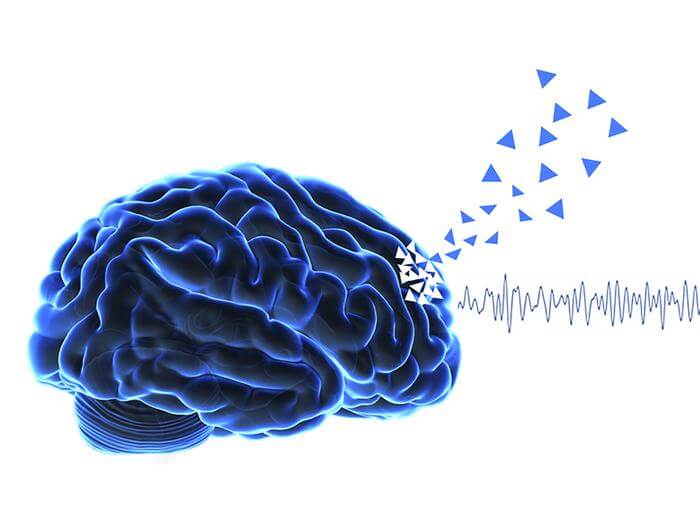LAUSANNE, Switzerland — Feeling as though someone is standing behind you when no one is there could be an early indicator of Parkinson’s disease, according to a new study. These unusual experiences are often dismissed by patients and medical professionals as side-effects of medication. However, researchers from the Ecole Polytechnique Fédérale de Lausanne in Switzerland warn that these kinds of hallucinations precede traditional motor symptoms such as tremors in a third of Parkinson’s patients.
The team adds that after the onset of motor symptoms, hallucinations affect half of the patients with this disease.
“We now know that early hallucinations are to be taken seriously in Parkinson’s disease,” says Professor Olaf Blanke of the Ecole Polytechnique Fédérale de Lausanne, in a media release.
The researchers reveal that Parkinson’s patients recently diagnosed with the disease who also experience these hallucinations are more likely to undergo a swift cognitive decline. Within the first five years of the disease, these patients tend to experience more difficulties with memory, planning, and automatic responses, a condition referred to as a decline in frontal executive function.
Following those first five years, the hallucination-prone group displayed a stronger association with motor issues, known as frontal theta activity. While Parkinson’s is commonly identified as a movement disorder, non-motor symptoms often appear early in the disease’s progression. Hallucinations can range from mild, such as presence hallucinations, to more severe visual hallucinations as the disease progresses.
Scroll down to see the most common Parkinson’s symptoms

(credit: EPFL / Bernasconi)
By concentrating on these early indicators, the research team aims to challenge the present tendency to diagnose Parkinson’s too late for optimal preventive and disease-modifying therapies.
Complex visual hallucinations, such as seeing someone who is not there, have previously been associated with cognitive decline and dementia in Parkinson’s patients. As these generally occur in later stages of the disease, however, they often aren’t recognized as an early sign of cognitive decline.
“If you have Parkinson’s disease and experience hallucinations, even minor ones, then you should share this information with your doctor as soon as possible,” says Dr. Frosco Bernasconi of the Ecole Polytechnique Fédérale de Lausanne. “So far, we only have evidence linking cognitive decline and early hallucinations for Parkinson’s disease, but it could also be valid for other neurodegenerative diseases.”
To investigate presence hallucinations, the researchers collaborated with San Pau Hospital in Barcelona, collecting data from 75 patients, between the ages of 60 and 70, who had a diagnosis of Parkinson’s. The clinicians carried out a series of neuropsychological interviews to assess the patients’ mental state, including whether they experienced things that weren’t actually there. They also conducted EEG (electroencephalography) measurements to record the patients’ brain activity at rest.
“We aim to have an early marker to identify individuals at risk of a more severe form of Parkinson’s disease, characterized by a more rapid cognitive decline and dementia, based on hallucinations proneness,” Dr. Bernasconi further explains. “And ideally identify those individuals even before hallucinations actually occur. We are therefore developing neurotechnology methods and procedures for that purpose.”
The study is published in the journal Nature Mental Health.
The 8 most common symptoms of Parkinson’s disease
It’s important to note that not every individual with Parkinson’s will experience all of these symptoms, and the severity can vary widely from person to person.
- Tremors: A tremor, or shaking, often starts in a limb, often your hand or fingers. This is one of the most noticeable early signs.
- Bradykinesia (slowness of movement): Over time, Parkinson’s may slow your movement, making simple tasks difficult and time-consuming.
- Rigid muscles: Muscle stiffness may occur in any part of your body. This can limit your range of motion and cause pain.
- Impaired posture and balance: Your posture may become stooped, or you may have balance problems.
- Loss of automatic movements: In Parkinson’s disease, you may have a decreased ability to perform unconscious movements, including blinking, smiling, or swinging your arms when you walk.
- Speech changes: Speech may become soft, quick, slur, or hesitate before talking. Your speech may be more of a monotone rather than having the usual inflections.
- Writing changes: It may become hard to write, and handwriting may appear small.
- Non-motor symptoms: These can include issues like depression and other emotional changes, difficulty swallowing, chewing, and speaking, urinary problems or constipation, skin problems, and sleep disruptions.
If you or someone you know is experiencing these symptoms, please seek professional medical advice. It’s important to have these symptoms evaluated by a healthcare provider, as they can also be caused by medications or other conditions.
South West News Service writer Pol Allingham contributed to this report.

